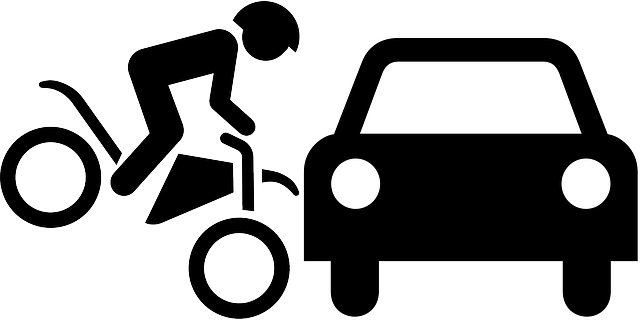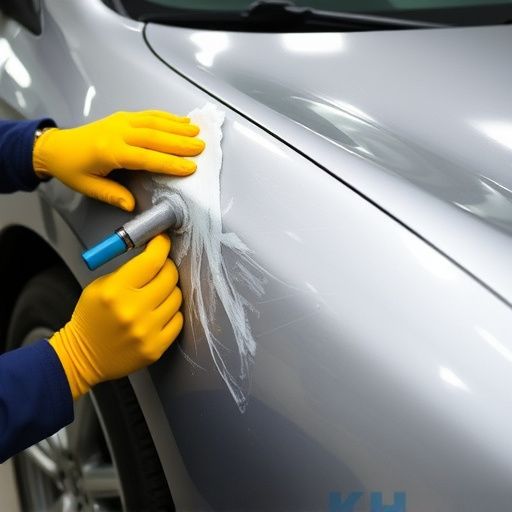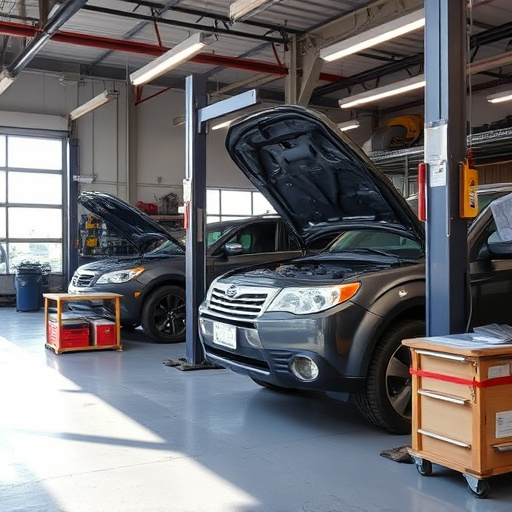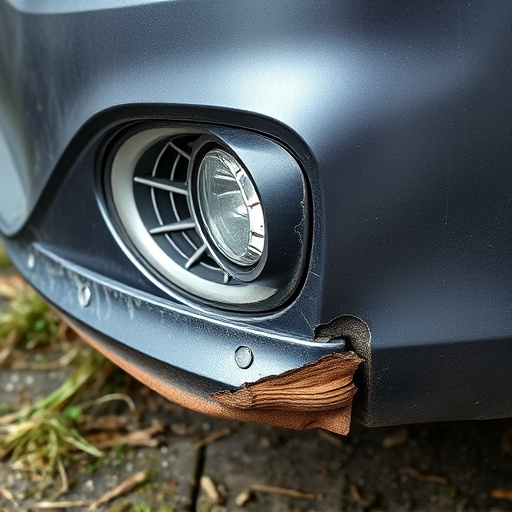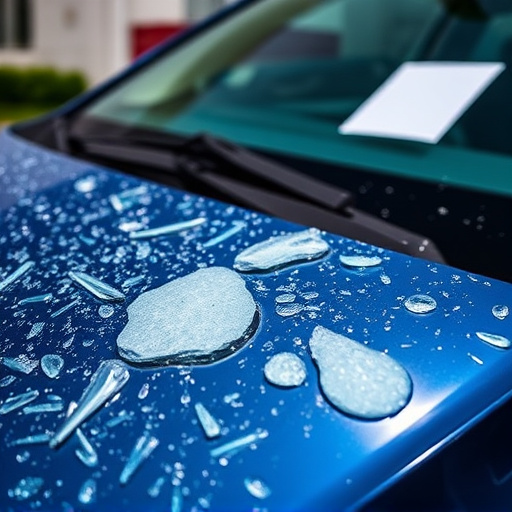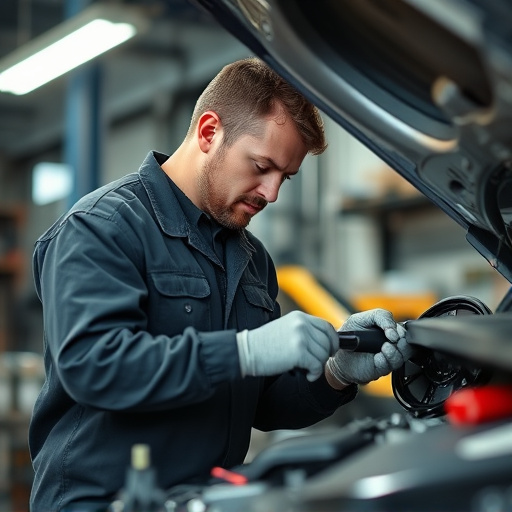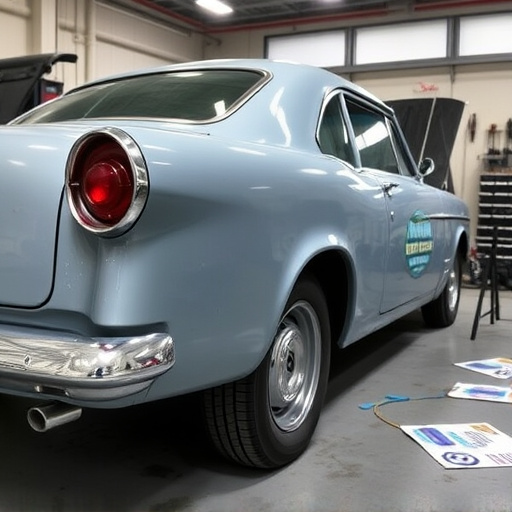Water intrusion into a Tesla's charging port can cause severe damage due to poor sealing or weather exposure, leading to short circuits and functionality issues. Regular maintenance, such as keeping the port dry and using waterproof covers, is crucial to prevent corrosion of internal wiring and connectors, which can result in costly repairs. Diagnosing moisture-related issues promptly through a reputable body shop assessment and repair prevents further damage to this critical component, ensuring efficient and safe charging for electric vehicles (EVs). A systematic approach involving disassembly, inspection, cleaning, replacement or repair, reassembly, and reconnection of the battery guarantees immediate functionality and prolonged protection against future water damage.
Experiencing moisture intrusion in your Tesla’s charging port can be a frustrating issue. This often leads to damaged connectors, preventing seamless EV charging. Understanding how water and humidity cause wear and tear is the first step towards prevention and repair. This article delves into the common signs of a faulty Tesla charging port, offering a comprehensive guide for DIY enthusiasts on effectively repairing and restoring these ports, ensuring your electric vehicle remains reliable and charged. Learn about Tesla charging port repair now.
- Understanding Tesla Charging Port Damage from Water or Moisture
- Diagnosing the Issue: Common Signs and Symptoms
- Repair Process: Step-by-Step Guide for Effective Restoration
Understanding Tesla Charging Port Damage from Water or Moisture

Water or moisture intrusion into a Tesla’s charging port can cause significant damage to its sensitive components. This issue often arises due to poor sealing or exposure to harsh weather conditions, leading to short circuits and functionality problems. The charging port, being an essential part of the vehicle’s infrastructure for electric charging, requires meticulous care to prevent such damages.
When moisture infiltrates, it can corrode internal wiring and connectors over time, resulting in costly repairs. Tesla charging port repair becomes necessary when signs of water damage, like rust or faulty charging, are observed. Regular maintenance, including keeping the port area clean and dry, and utilizing waterproof covers during extreme weather, can significantly reduce these risks. This proactive approach is a crucial aspect of vehicle body repair, ensuring the longevity of not just the charging port but also other sensitive electrical systems within the car, mirroring the importance of auto repair services in general.
Diagnosing the Issue: Common Signs and Symptoms
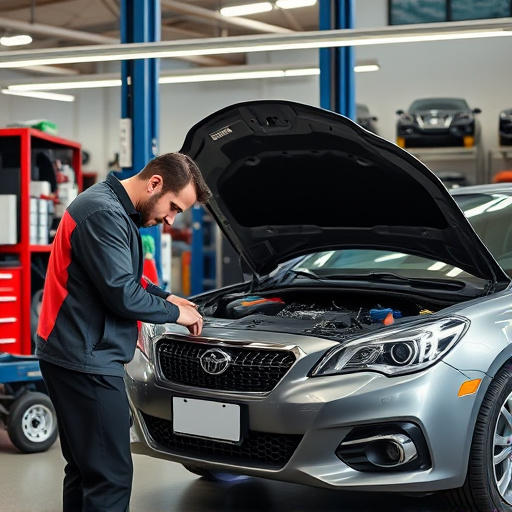
Diagnosing a Tesla charging port issue due to water or moisture intrusion is crucial for effective Tesla charging port repair. Common signs include unusual electrical behavior, such as the charger blinking or the vehicle refusing to charge. You might also notice corrosion around the port or a musty smell, indicating moisture buildup. Cracks or damage to the port’s protective covering are other visual cues that something is amiss.
If your Tesla charging port has been exposed to water or moisture, don’t delay; take it to a reputable vehicle body shop or collision repair facility for an immediate assessment and necessary Tesla charging port repair. Timely intervention can prevent further damage and ensure the longevity of your car’s charging system, an essential component in today’s electric vehicle landscape.
Repair Process: Step-by-Step Guide for Effective Restoration

When faced with a Tesla charging port damaged by water or moisture intrusion, a meticulous repair process is essential to ensure optimal functionality and longevity. Here’s a step-by-step guide designed for effective restoration.
Begin by disconnecting the Tesla’s battery to safeguard against electrical hazards. Next, carefully disassemble the charging port, taking note of its intricate components. This involves detaching any cables or connectors securely attached via soldering or crimping. After disassembly, inspect each part meticulously for signs of corrosion or damage. Use specialized cleaning solutions to remove any moisture residue, focusing on hard-to-reach areas. Once dry, replace or repair damaged parts, ensuring all components are in pristine condition. Reassemble the port, following the original installation procedures precisely. Before reconnecting the battery, double-check every connection for security and integrity. This meticulous approach guarantees a Tesla charging port repair that not only addresses immediate issues but also prevents future damage from water intrusion.
Tesla vehicles are renowned for their advanced technology, but like any electrical component, the charging port is susceptible to damage from water or moisture intrusion. Understanding the issue, recognizing common signs, and knowing the repair process can help ensure your Tesla’s charging port remains functional and reliable. By following a systematic approach to diagnosis and repair, you can effectively restore your Tesla’s charging capability, minimizing downtime and maintaining the overall health of your vehicle’s electrical system. Remember, prompt action when suspecting moisture damage is key to preventing further complications.
